Visiting the Maginot Line was a key item on my research bucket list for my latest trip to France. I've long been fascinated by this chain of fortified bunkers built along the border between France and Germany. But as I sat down to write this post, I found myself starting and restarting a dozen times. Everything associated with the Maginot Line feels overwhelming - it's too massive, too detailed, too tragic.
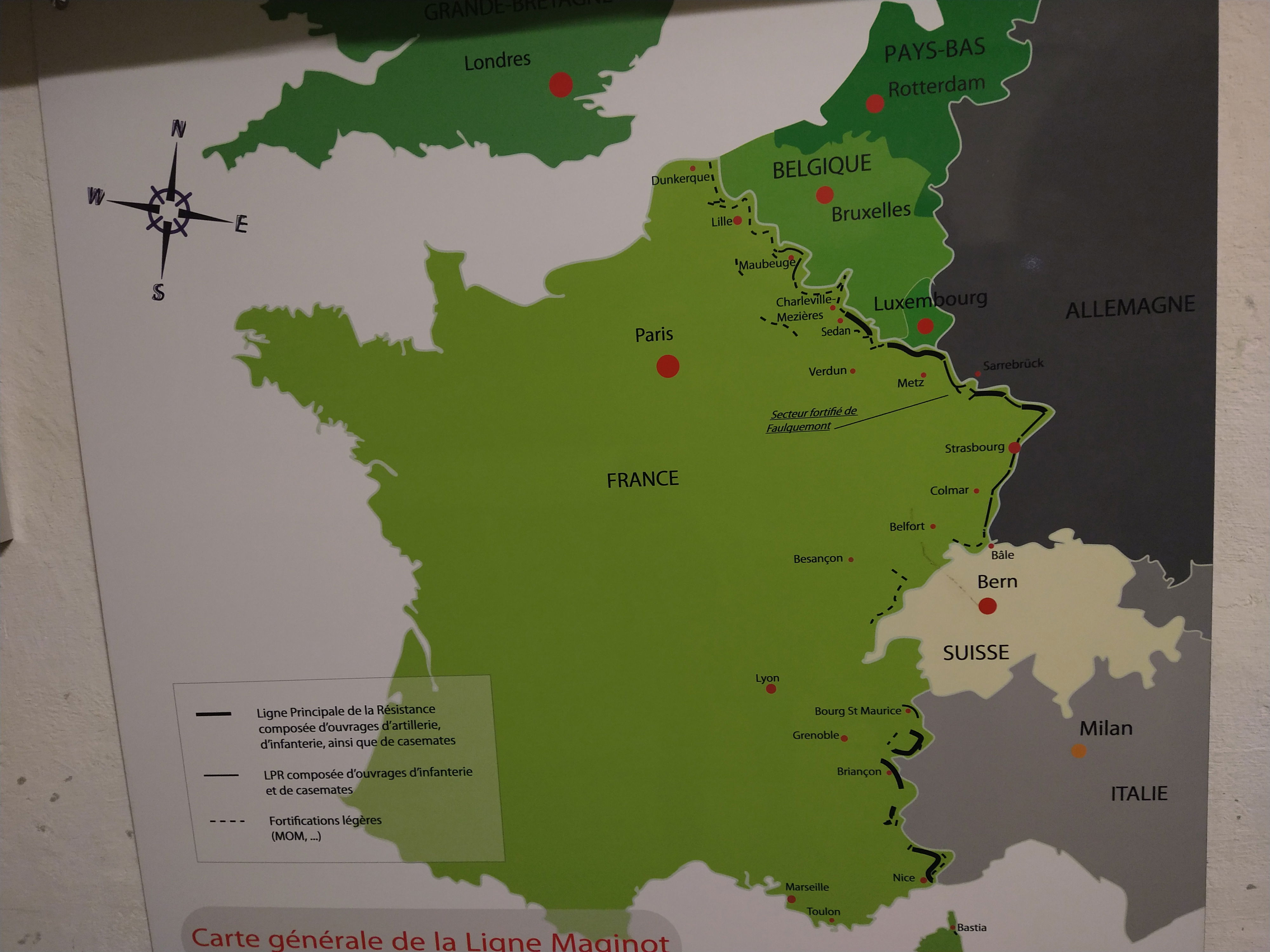
Map of the Maginot Line, presented at the "Four A Chaux" section, in Lembach, France.
Construction began in the late 1920s, and while scattered fortifications were built along the border with Italy, France's main focus was always Germany. The two nations had waged war twice in less than 40 years - in 1870 and again in 1914. France endured enormous losses during the First World War, becoming the most depopulated country in Europe. If another war were to come, France feared it simply would not possess enough manpower to protect itself. And so, a wall would be built instead.
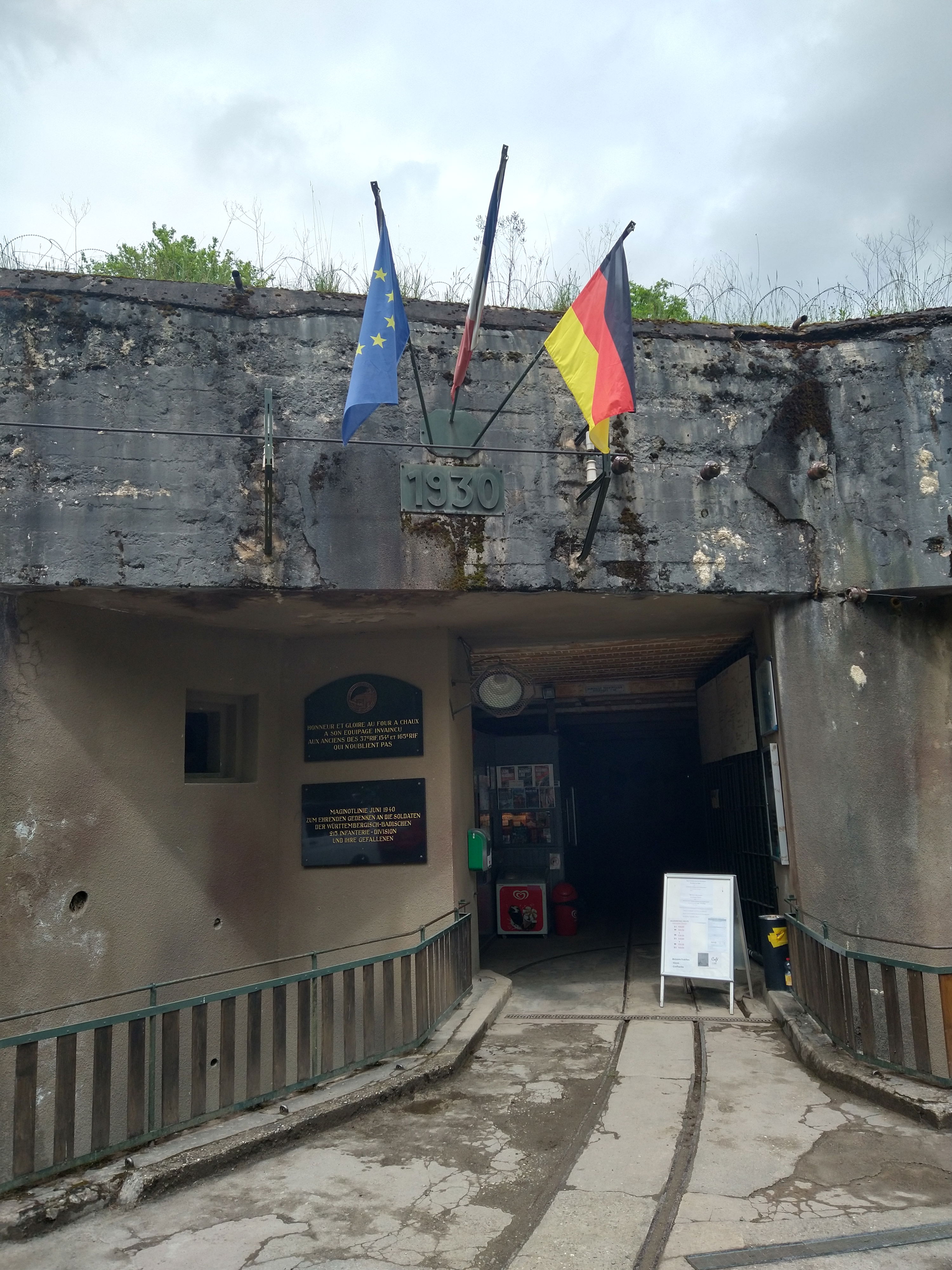
The first door of the ammunition entrance at the "Four A Chaux" section is made of iron. The flags you see are European, French, and German.
The section of the Maginot Line I visited sits amid a lush forest in the town of Lembach, about an hour's drive from the Alsatian capital of Strasbourg. It's called "Four A Chaux," which means "Lime Kiln," because the Lembach region was known for limestone production. The Fort itself was dug 20 to 25 meters into the rock, a monumental task completed by both French and foreign laborers working twenty-four hours a day in eight-hour shifts. I'll leave it to military historians to describe what a technical marvel the Maginot Line was: its extensive use of electricity, its sophisticated air ventilation system, the complexity of its tunnels, turrets, weaponry, and water systems. I'll let the experts debate whether this colossal structure gave the French public a false sense of security, that this wall, this "line," would truly protect them.
What interests me is the people involved: both those who conceived of the Maginot Line and those who lived inside its dank walls.
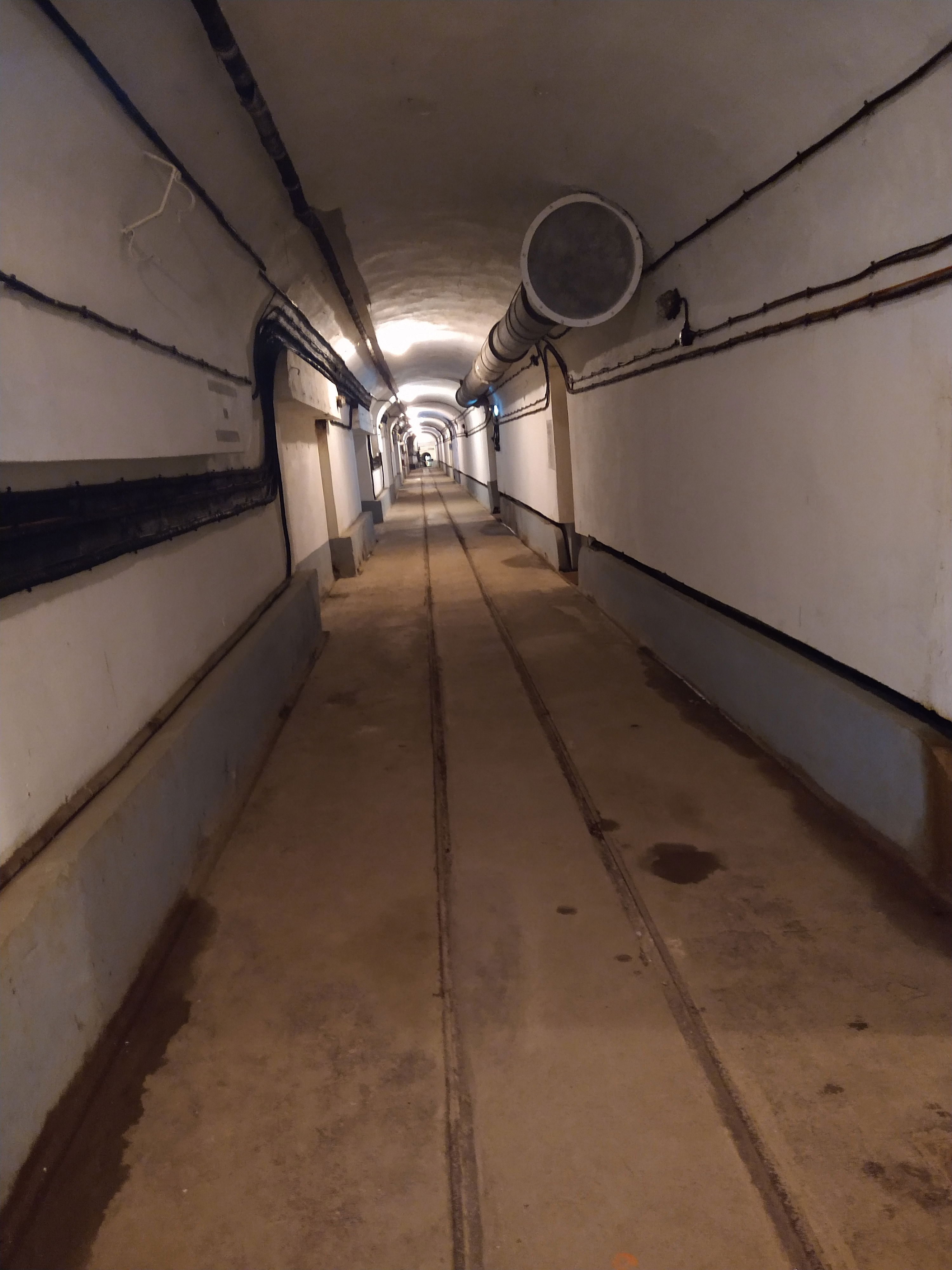
Endless tunnels, and chilly down there too! Unlike some parts of the Maginot Line, the rails at "Four A Chaux" were not electric. Instead, hand-cranked, flatbed rail cars were used to transport goods.
Just visiting this one part of the Maginot Line at "Four A Chaux" gave me a sense of how huge the entire system must have been, and how meticulously designed and well-built it was. But therein also lies the tragedy, because the Maginot Line turned out to be a massive military miscalculation. In the spring of 1940, Germany simply went around it, through Belgium and into Northern France.
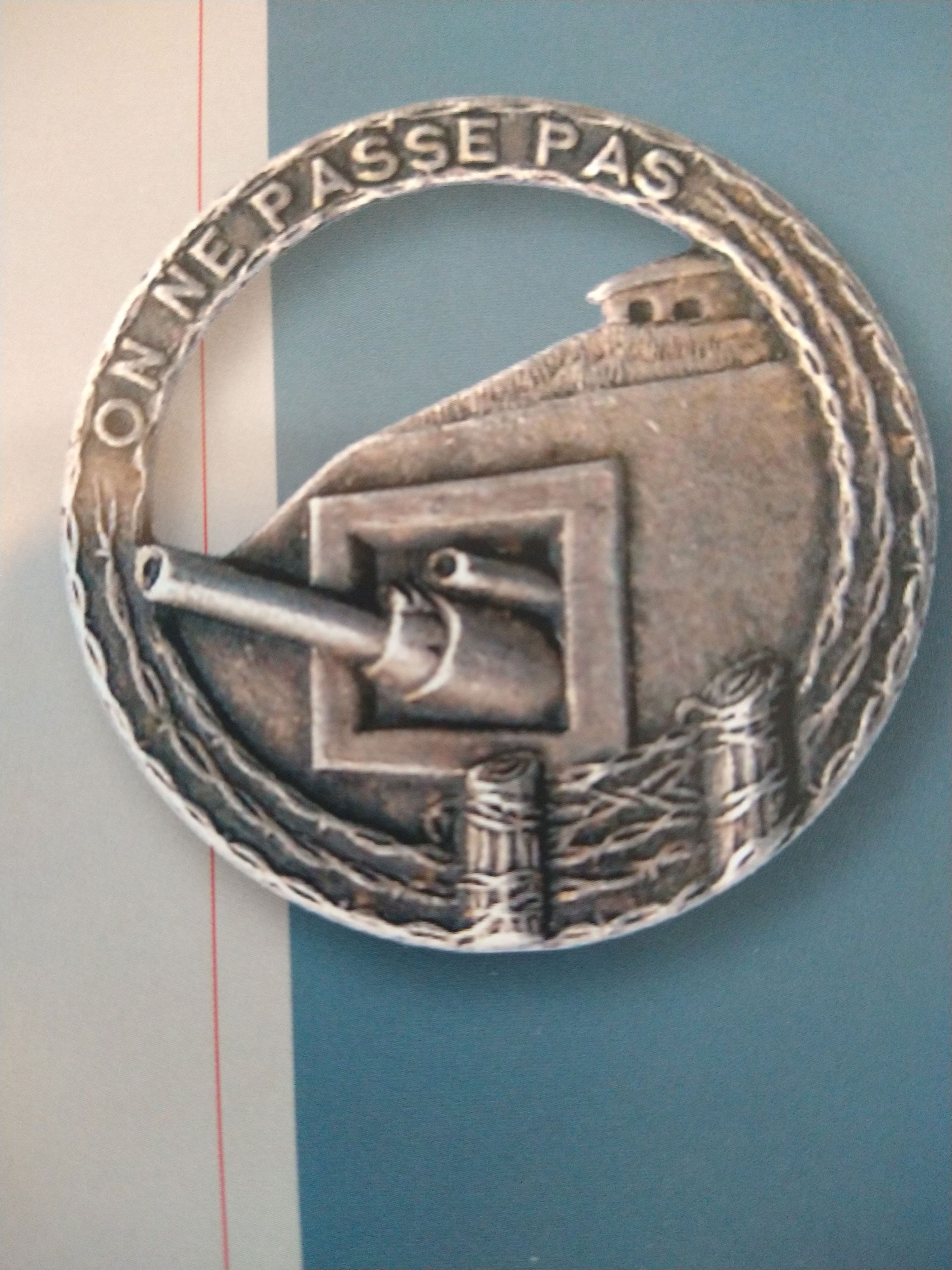
This confident Maginot Line emblem says: "They Shall Not Pass." And they didn't - they went around.
During my visit to the"Four A Chaux," we followed our guide for what seemed like miles, shivering and longing for natural light. I thought about the men who lived there, for months on end, waiting for war. Soldiers slept 24 to a room, with one seatless "Turkish Toilet" shared among 40 men, and one shower for every 100. Still, there was a fully-equipped medical and dental facility, a modern kitchen, and each man had a ration of a 1/4 of a litre of red wine per meal.
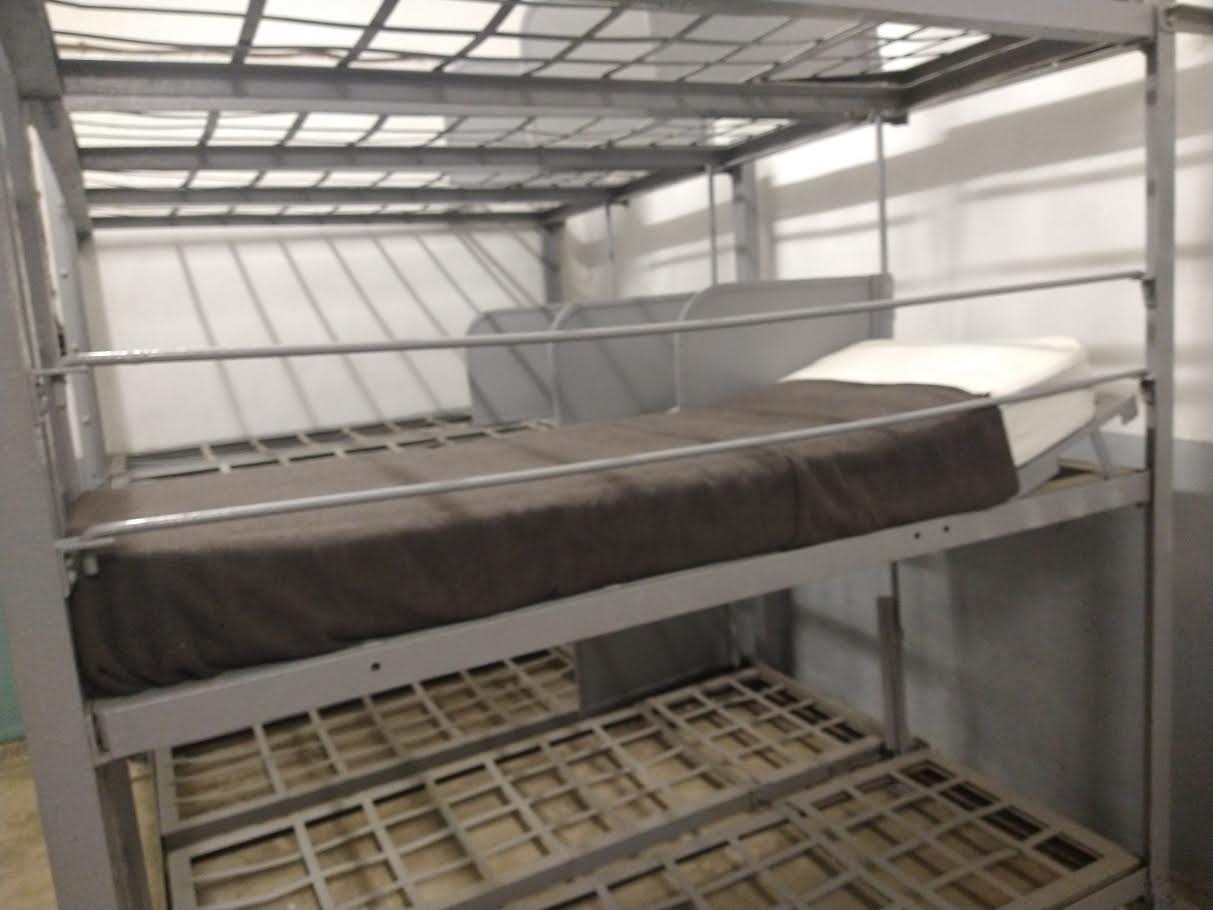
Close quarters in the bunks, sleeping three stacked up and four across.
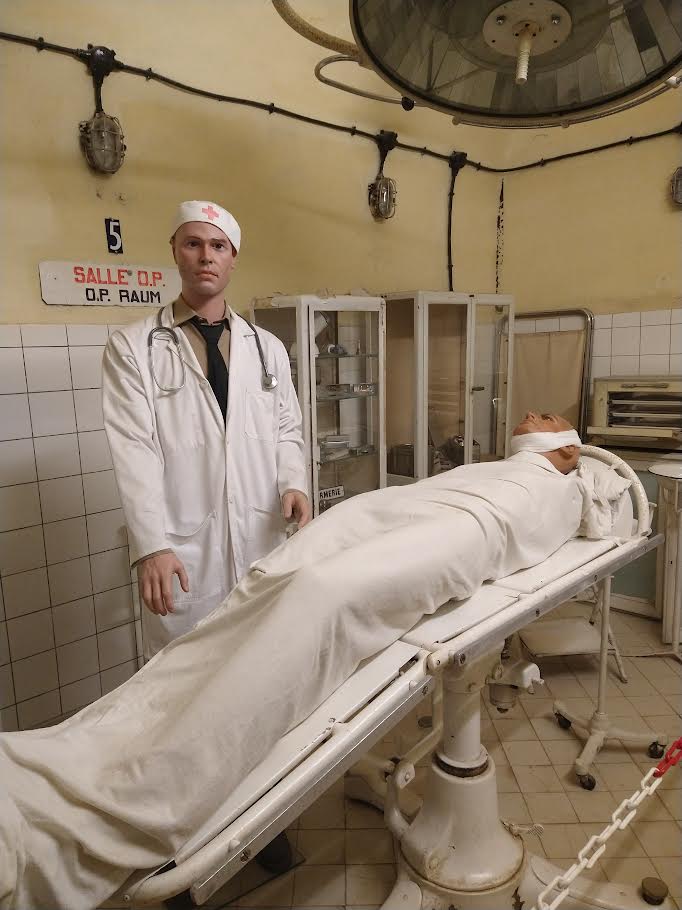
The surgery section of the infirmary.
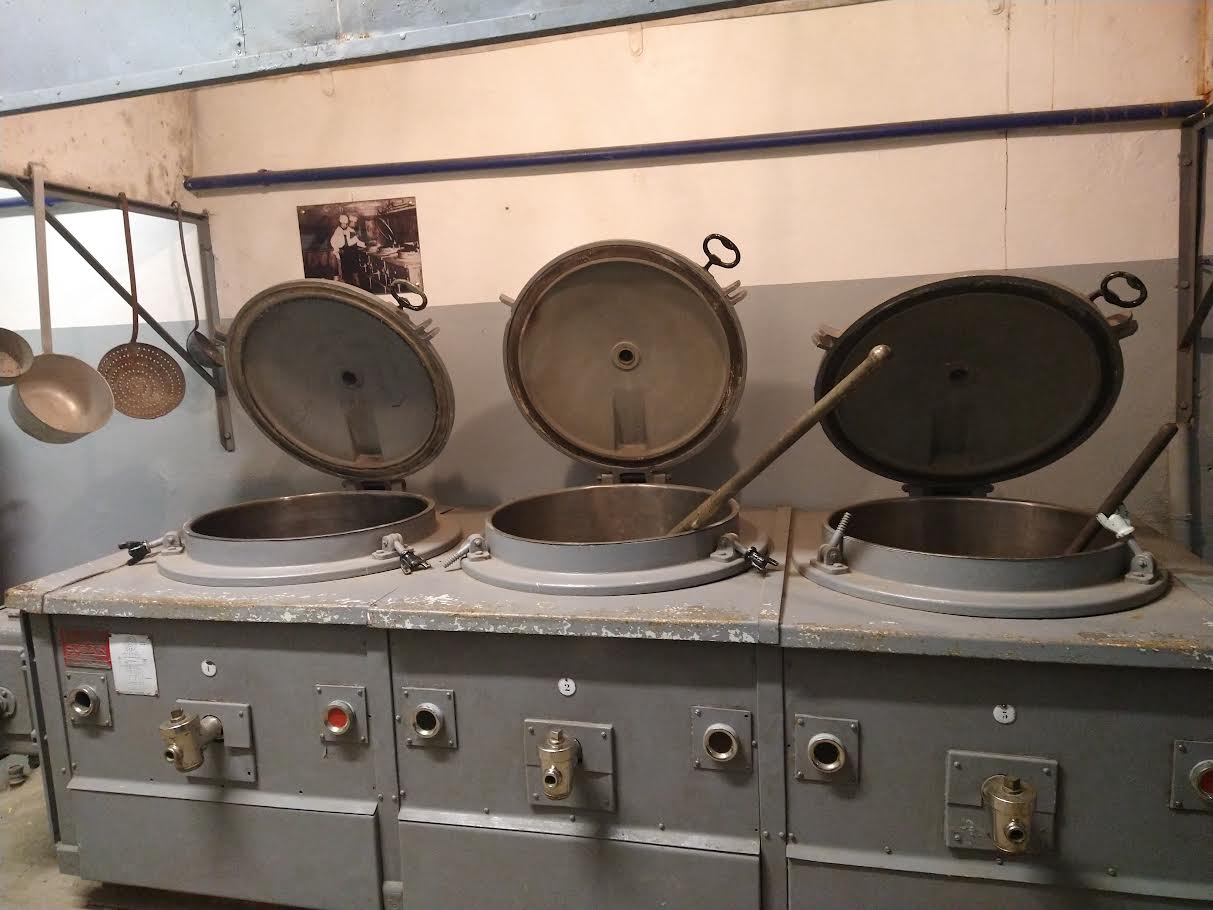
Huge pots in the kitchen! But no cafeteria, soldiers had to eat wherever they were, whether on duty, in the hallways, or in the dormitory.
At the very end of our tour came the room that grabbed me the most: featuring an entire wall covered with propaganda posters. As a journalist, I'm of course interested in language, argument, and how images and words are used to convey powerful messages. Perhaps that's a whole other blog post! For now, I'll share two posters that demonstrate how fascist leaders (in Germany and France) stoked fears of Communism to justify their cause.
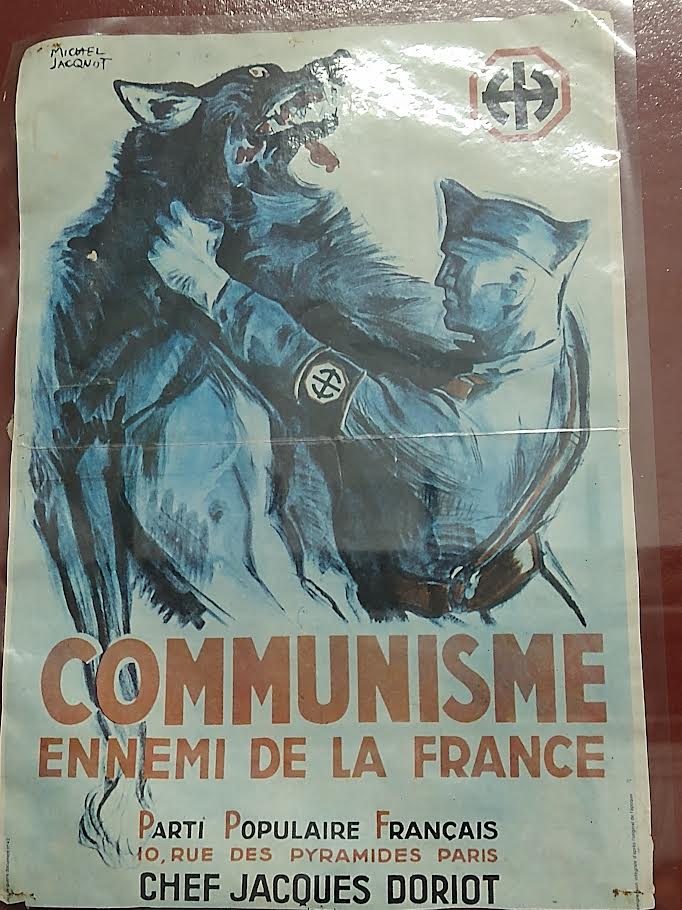
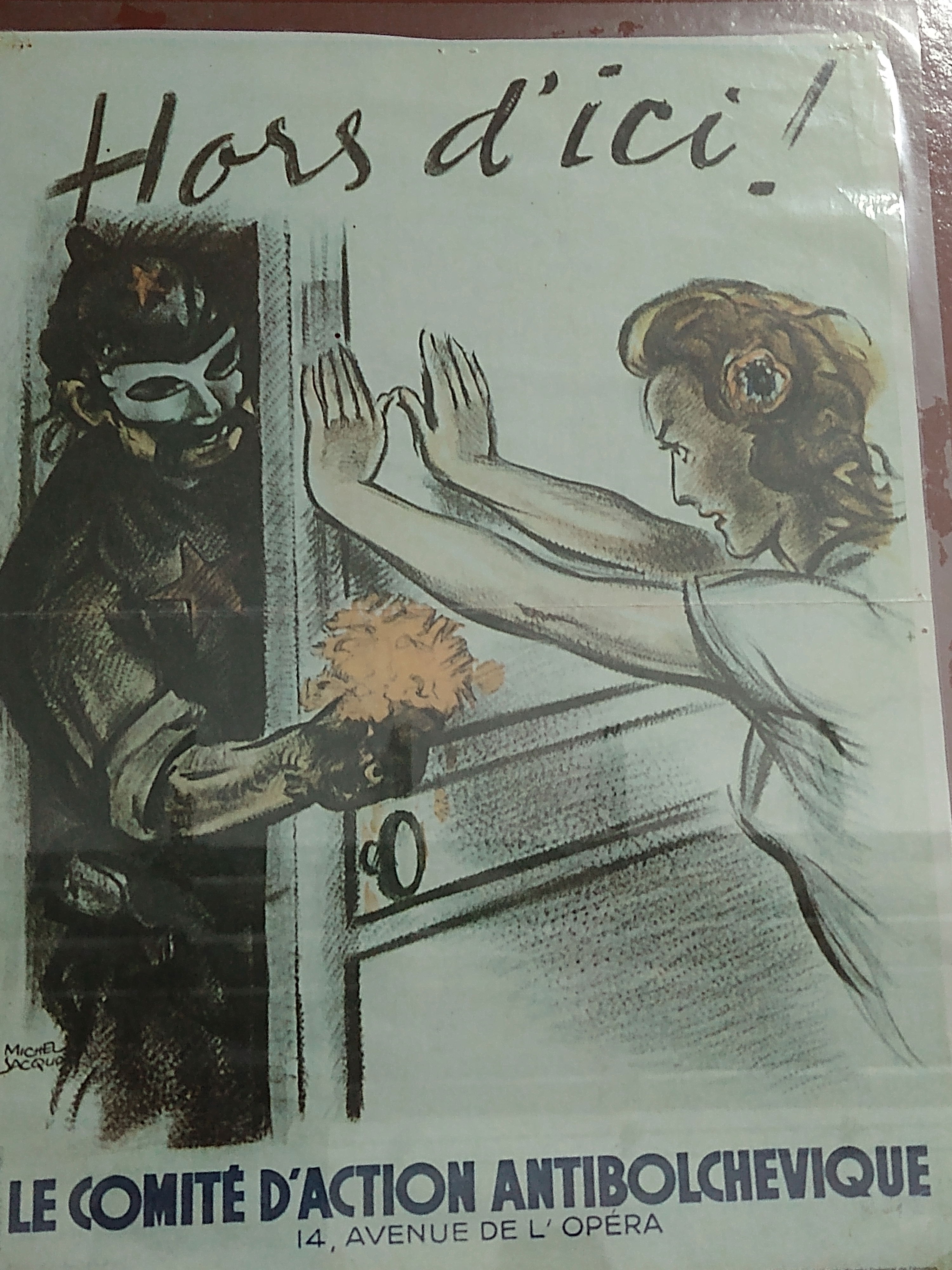
The Maginot Line was so important for me to visit, because it plays a vital role in the history of Alsace, the province where my forthcoming novel takes place. When France declared war on Germany, the city of Strasbourg and those towns located right along the German border were evacuated immediately. But other key Alsatian communities were not...under the assumption that they would be protected by the Maginot Line. This includes the beautiful little city of Colmar, where the true story behind The Shopkeeper of Alsace happened.
Note: All photos were taken by me at the "Four A Chaux." All information is from the Fort's guidebook, published by the Syndicat d'Initiative de Lembach et Environs.